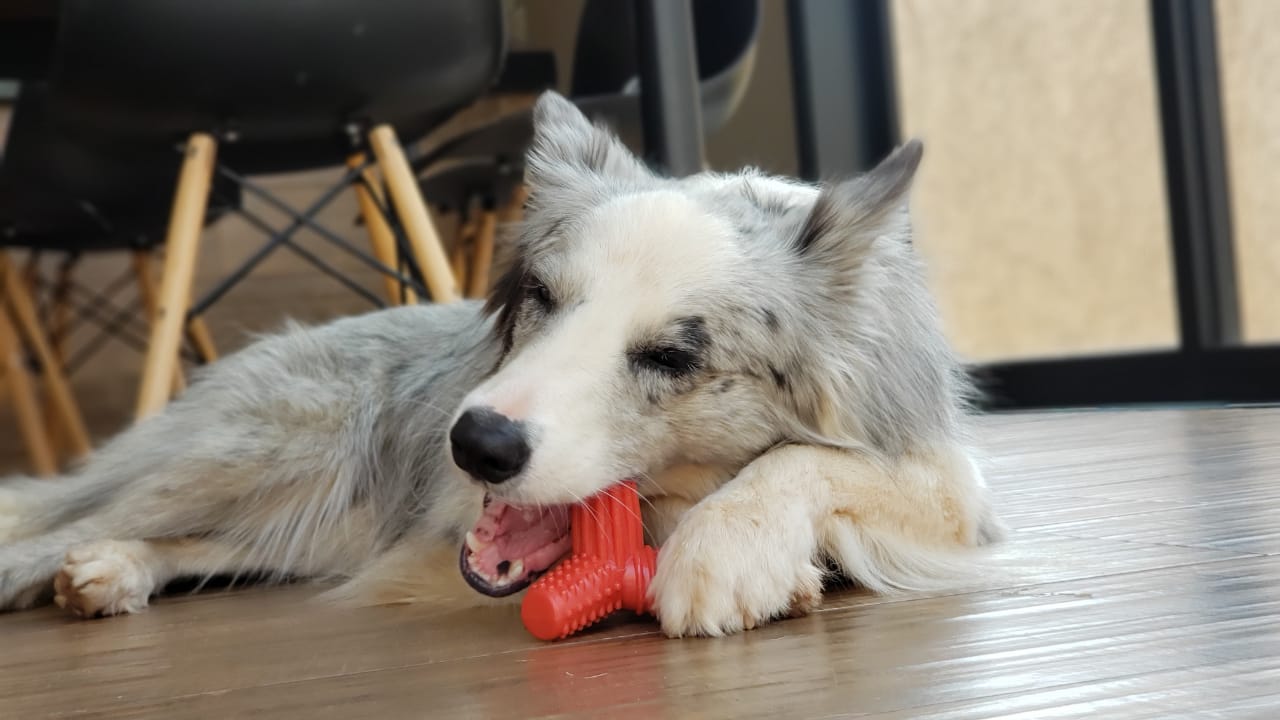How a balanced routine improves your dog's well-being

It's no secret that we're big advocates of positive dog training and that this methodology helped us build the relationship we have with Gaia today. Positive training also showed us all the benefits that a well-structured and balanced routine can bring to your dog - and, consequently, to you.
We asked Allana Paião, a positive dog trainer from Turma do Focinho, to explain below the importance of routine for dogs and give some tips on how to structure a balanced routine that meets your dog's needs.
We can't talk about dogs' well-being without understanding what a structured routine is.
Dogs need physical and mental activities well distributed throughout the day, every day! As well as moments of rest, naps and relaxation.
When we take on the responsibility of bringing a new member into the family, it's not enough just to provide water, food and a bed to sleep in, even if you have a small dog and live in a big house. The dog's routine needs to be structured according to the family's routine, respecting and meeting the basic needs of the canine species and the individual needs of your dog specifically.
They need a predictable routine so that they feel safe. But this predictability does not mean doing the same thing every day, but rather bringing different challenges for the dog to interact with you and the environment.
First, here is a list of everything we need to provide for our dogs:
1. Walks
This is when your dog will be able to sniff, exchange information with the environment, expend physical and mental energy and socialise (even if he has no direct interaction with other dogs and people).
2. Playtime
Pleasant moments of interaction with the family and/or another dog are essential. Those moments strengthen the dog-human bond, help to expend physical energy and, depending on the game, also help to expend mental energy.
3. Food Enrichment
There are so many fun ways to feed your dog, that the common bowls got boring. Dogs, in general, like to work for their food. Nowadays there are several options of interactive toys created to provide food enrichment for dogs, which are available in pet shops and online stores. However, we can also provide food enrichment with recyclable items that we have at home. Some ideas are putting the food/snack inside a cardboard box or empty plastic bottle or simply hiding snacks around the house, so the dog needs to sniff around to find them.
NOTE: always supervise your dogs in these activities.
4. Chewing
Chewing is a natural behaviour of the canine species, and to provide this we also find several options available on the market, such as ox horn, cow hoof, nylon bones (with and without flavour), and naturally dehydrated dog chews (cow and pig ears, tracheas, collagen rolls etc.).
NOTE: always supervise your dogs in these activities.
5. Training
Teaching tricks to your dog helps improve their behavioural repertoire, improves bonding and communication between dog and humans, provides mental (and physical, depending on the training) energy expenditure, and is a lot of fun for both dogs and humans.
6. Rest
Providing your dogs with moments of rest and relaxation is just as important as offering activities and burning their energy. Some dogs can switch off very easily, others need help to do so. Too much activity can end up overstimulating your dog, and that can make them stressed. If your dog is looking for attention and activity all the time, and has a hard time relaxing, it is a good idea to seek professional help.
Okay, so now you know everything that needs to happen in the dog's routine. But how to distribute these activities throughout the day? The answer is: it depends!
Not every dog likes playing with balls, not every dog likes to chew on nylon bones, and not every dog can go for a walk every day (or more than once a day). Therefore, we need to understand the needs of each individual, and then adapt the activities according to their preferences and limitations, regardless of breed, size or age. Two dogs of the same breed living in the same house may have different preferences and needs.
Know your dog, respect his needs and limitations and provide a consistent and appropriate routine accordingly. Their well-being depends solely on you!
